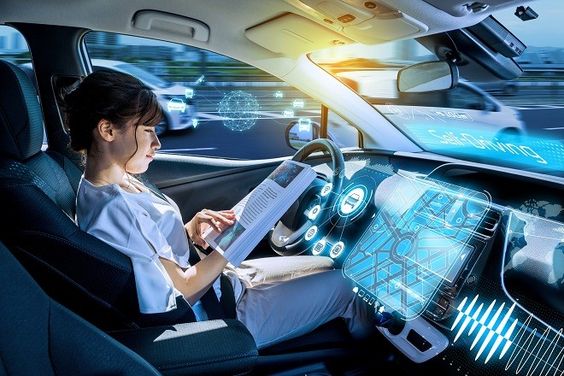Introduction:
Autonomous driving technology, also known as self-driving or driverless car technology, has been making significant strides in recent years. 2024 marks a pivotal year for this rapidly evolving field, with advancements in sensor technology, artificial intelligence (AI), and regulatory frameworks pushing the boundaries of what's possible. This article delves into the latest developments in autonomous driving technology, exploring the key trends, challenges, and future prospects.

Level 5 Autonomy: A Glimpse into the Future
While fully autonomous vehicles (Level 5 autonomy) remain a distant reality, significant progress is being made. Companies like Waymo, Cruise, and Tesla are actively testing and refining their self-driving systems in real-world environments. These systems rely on a combination of advanced sensors, including LiDAR, cameras, and radar, to perceive the surroundings and make decisions. AI algorithms process this data in real-time, enabling the vehicle to navigate complex traffic situations, identify obstacles, and react accordingly.
The Rise of Advanced Driver-Assistance Systems (ADAS)
While Level 5 autonomy may be years away, ADAS technologies are already making a significant impact on road safety and driver convenience. Features like adaptive cruise control, lane departure warning, and automatic emergency braking are becoming increasingly common in modern vehicles. These systems assist drivers in various tasks, reducing driver fatigue and minimizing the risk of accidents.
Regulatory Landscape: Navigating the Path to Commercialization
The widespread adoption of autonomous vehicles requires a robust regulatory framework. Governments around the world are actively developing guidelines and standards to ensure the safety and ethical use of self-driving technology. This includes addressing issues such as liability, data privacy, and cybersecurity. As regulations evolve, we can expect to see a gradual increase in the commercialization of autonomous vehicles, starting with specific applications like ride-hailing services and commercial trucking.
Challenges and Opportunities
Despite the advancements, autonomous driving technology faces several challenges. These include the development of robust AI algorithms capable of handling unpredictable situations, ensuring cybersecurity against malicious attacks, and addressing public concerns regarding safety and job displacement. However, the potential benefits of autonomous driving, such as reduced traffic congestion, improved road safety, and increased accessibility for people with disabilities, present significant opportunities for innovation and societal progress.
Conclusion:
Autonomous driving technology is rapidly evolving, with significant advancements being made in sensor technology, AI, and regulatory frameworks. While full autonomy may still be years away, the increasing adoption of ADAS technologies is already transforming the driving experience. As the technology continues to mature, we can expect to see a gradual shift towards a future where self-driving vehicles play a significant role in our transportation systems.




